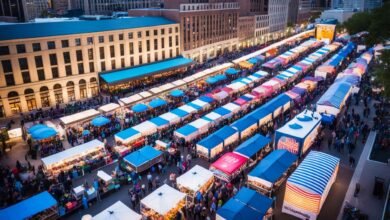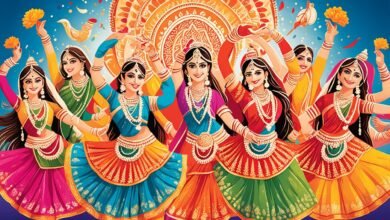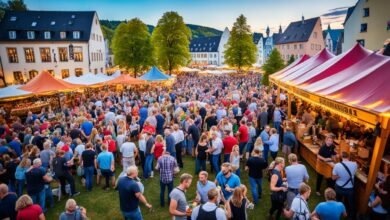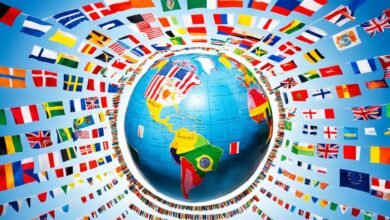Table of Contents
Diwali, also known as Deepavali or the Festival of Lights, is arguably the most significant and widely celebrated festival in India. It’s a vibrant spectacle that transcends religious boundaries, uniting people in a joyous celebration of good over evil, light over darkness, and knowledge over ignorance.
This festival is not merely a time for festivities; it embodies deep cultural, historical, and spiritual significance. In this article, we will embark on a comprehensive journey to understand the multifaceted nature of Diwali, exploring its various aspects and its impact on Indian society and beyond.

The Mythological Origins of Diwali
The origins of Diwali are deeply rooted in Indian mythology, with different regions and communities associating the festival with various narratives. While the core theme remains the triumph of light over darkness, the specific stories lend unique flavors to the celebration. Let’s delve into the primary mythological tales associated with Diwali:
The Return of Lord Rama
Perhaps the most widely recognized story is the homecoming of Lord Rama, along with his wife Sita and brother Lakshmana, after a 14-year exile. Their return to Ayodhya, as depicted in the epic Ramayana, is marked by the city being illuminated with diyas (oil lamps) and joyous celebrations.
The legend symbolizes the victory of good (Rama) over evil (Ravana) and serves as a reminder of righteousness and courage. This is why many people light diyas during Diwali – it’s a symbolic gesture of welcoming light into their lives and homes, just as the people of Ayodhya welcomed Lord Rama.

The Legend of Krishna and Narakasura
In some parts of India, Diwali is also associated with Lord Krishna’s triumph over the demon Narakasura. Narakasura, known for his cruelty and tyranny, had imprisoned thousands of women. Krishna, with the help of Satyabhama, defeated him, freeing the prisoners and restoring peace.
This narrative is particularly celebrated in Southern India and reinforces the idea of overcoming injustice and oppression. It’s a testament to the power of compassion and divine intervention in the face of evil.
Lakshmi Puja: The Goddess of Wealth and Prosperity
Another key aspect of Diwali is the veneration of Goddess Lakshmi, the deity of wealth, prosperity, and good fortune. Hindus believe that Lakshmi blesses those who keep their homes clean and illuminated during Diwali.
Therefore, the days leading up to Diwali are spent cleaning and decorating homes, creating a welcoming environment for the goddess.
This ritual is not just about material wealth but also about the spiritual abundance and well-being that Lakshmi represents. Prayers and offerings are made to Lakshmi during this time, seeking her blessings for a prosperous year ahead.
The Five Days of Diwali: A Detailed Overview
Diwali is not a single-day event; it’s a five-day festival, with each day having its own unique set of rituals and traditions. Let’s explore these five significant days:
Day 1: Dhanteras
The first day of Diwali, known as Dhanteras, is dedicated to the worship of Lord Dhanvantari, the deity of health and Ayurveda. It is considered auspicious to purchase new items, especially gold and silver, on this day. The word ‘Dhan‘ signifies wealth, and many people also buy new utensils and appliances to signify prosperity. The day is also associated with the lighting of the first diya, marking the beginning of the festival of lights.

Day 2: Naraka Chaturdashi (Choti Diwali)
The second day, Naraka Chaturdashi, also referred to as Choti Diwali (Small Diwali), is when people believe that Lord Krishna defeated the demon Narakasura. On this day, early morning baths with oil are considered auspicious. People light diyas and burst a few firecrackers to celebrate the victory of good over evil. It’s often a prelude to the bigger celebrations of the following day.
Day 3: Lakshmi Puja (Main Diwali Day)
The third and most significant day is Lakshmi Puja, the main Diwali day. Homes are beautifully decorated with rangolis (colorful patterns made on the floor) and illuminated with diyas and electric lights. Families gather for a special puja (prayer ceremony) dedicated to Goddess Lakshmi.
Prasad (offerings of food) is made and shared, and many people wear new clothes and exchange gifts. This is the day when the spirit of Diwali is truly at its peak, with joy and celebration filling the air.

Day 4: Govardhan Puja and Annakut
The fourth day, Govardhan Puja, is dedicated to the worship of Mount Govardhan. This puja is linked to Lord Krishna lifting the mountain to protect the villagers from torrential rains. Annakut, which translates to “mountain of food,” is also celebrated on this day. A large variety of vegetarian dishes are prepared and offered to the deity, symbolizing gratitude for nature’s bounty.
Day 5: Bhai Dooj
The fifth and final day of Diwali is Bhai Dooj, a festival dedicated to the bond between brothers and sisters. On this day, sisters pray for the well-being of their brothers, and brothers often visit their sisters’ homes to receive blessings and gifts. It’s a day of love, protection, and strengthening familial ties.
Diwali Celebrations Across India: Regional Variations
While the core essence of Diwali remains the same, the celebrations vary across different regions of India. These variations enrich the cultural tapestry of the festival and reflect the unique traditions and customs of each area. Let’s explore a few notable regional variations:
Northern India
In Northern India, Diwali celebrations are grand and often focus on the return of Lord Rama. Fireworks displays are common, and markets are vibrant with festive decorations. The preparations for the main Lakshmi Puja are extensive, with emphasis on clean homes and elaborate rangolis.
Southern India
In Southern India, the focus tends to be on the victory of Lord Krishna over Narakasura. While Lakshmi Puja is observed, the celebrations often involve early morning oil baths and prayers. The use of firecrackers is slightly less prevalent compared to the North.
Eastern India
In Eastern India, particularly in West Bengal, Diwali often coincides with Kali Puja, dedicated to the fierce goddess Kali. While Lakshmi is still worshipped, the focus is also on the strength and power of Kali. The pandals (temporary structures) built for Kali Puja are elaborate and grand, showcasing intricate artistry.
Western India
In Western India, particularly in Gujarat, Diwali is marked by vibrant festivities with cultural events and garba dances. The business community places special emphasis on the Lakshmi Puja, and new accounting books are often opened on this day, reflecting the focus on prosperity and financial well-being.
The Significance of Lights and Firecrackers
The use of lights, particularly diyas, is central to the essence of Diwali. These lights symbolize the triumph of light over darkness, of knowledge over ignorance, and of good over evil. They are not just decorations; they are potent symbols of hope, positivity, and spiritual illumination.
Firecrackers, while more of a modern addition, are often used to celebrate the joyous occasion and to drive away evil spirits. However, there is a growing awareness about the environmental impact of firecrackers, and many people are choosing eco-friendly alternatives or opting for quieter celebrations.

The Social and Economic Impact of Diwali
Diwali has a significant social and economic impact on India. Socially, it brings people together, fostering a sense of community and shared joy. Families and friends gather, exchanging gifts, sharing meals, and celebrating together. It also promotes a spirit of charity, with many people donating to those in need during this time.
Economically, Diwali is a major boost to various industries, including retail, hospitality, and handicrafts. The demand for goods and services increases exponentially, contributing to the overall economy. It is a time of great economic activity, showcasing India’s vibrant entrepreneurial spirit.
Diwali Beyond India: The Global Celebration
Diwali’s influence extends far beyond India. The large Indian diaspora across the globe celebrates Diwali with as much fervor and enthusiasm as those within India. In many countries, Diwali is recognized as an important cultural festival, with public celebrations and events taking place in cities with significant Indian populations. These celebrations help to maintain cultural connections and spread the message of hope and unity that Diwali embodies. It is truly a global celebration that transcends geographical boundaries.
(FAQs)
What is the best way to celebrate Diwali in an environmentally friendly manner?
We can celebrate an eco-friendly Diwali by reducing the use of firecrackers or opting for eco-friendly alternatives. Focus on using diyas instead of electric lights, minimize waste, and give back to the community by donating to those in need. Also, be mindful of the decorations we use and opt for sustainable options when possible.
Is Diwali a purely Hindu festival?
While Diwali originated in Hindu traditions, it’s celebrated by people of various faiths in India and around the world. It has transcended its religious roots to become a cultural festival that embodies universal values like the triumph of good over evil. Many people of different faiths celebrate Diwali as a cultural event, participating in the lighting of lamps, gift-giving, and sharing joy.
What are some popular dishes prepared during Diwali?
Diwali is known for a wide array of delicious sweets and savory dishes. Popular dishes include ladoos, barfi, gulab jamun, samosas, chakli, and various regional specialties. The exact dishes prepared vary depending on family traditions and regional preferences. It’s a time when culinary skills are often put on display and families share in the joy of making and eating delicious food together.
Diwali is more than just a festival; it’s a cultural phenomenon that embodies the timeless principles of goodness, light, and unity. Its deep-rooted mythological significance, its vibrant traditions, and its unifying social impact make it a truly unique celebration.
As we celebrate Diwali, we must remember to embrace the core message of the festival: to dispel darkness with light, ignorance with knowledge, and negativity with positivity. We believe that by sharing the rich traditions and significance of Diwali with a broader audience, we can contribute to a greater understanding and appreciation of Indian culture and its values.
“`




